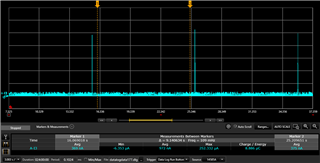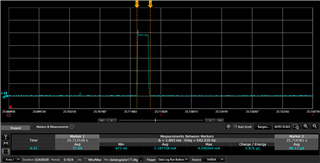Hi Guys,
We have a need to send data every 4 hours.
In order to do this, we sleep 1 hour at a time (1-hour timer - single shot) and increment counter, and when the count is 4 we send the data. This is working well.
Due to unknown reasons the device sometimes can get hung when trying to send the data.
Our plan was to set the WDT_CONFIG_RELOAD_VALUE to 120000000, to make sure we reset the device after 1 hour if it got stuck.
But we are unable to provide values more than 600000 (which triggers at 100 seconds).
Can u suggest a way to configure such a large interval?
regards
Shankar




